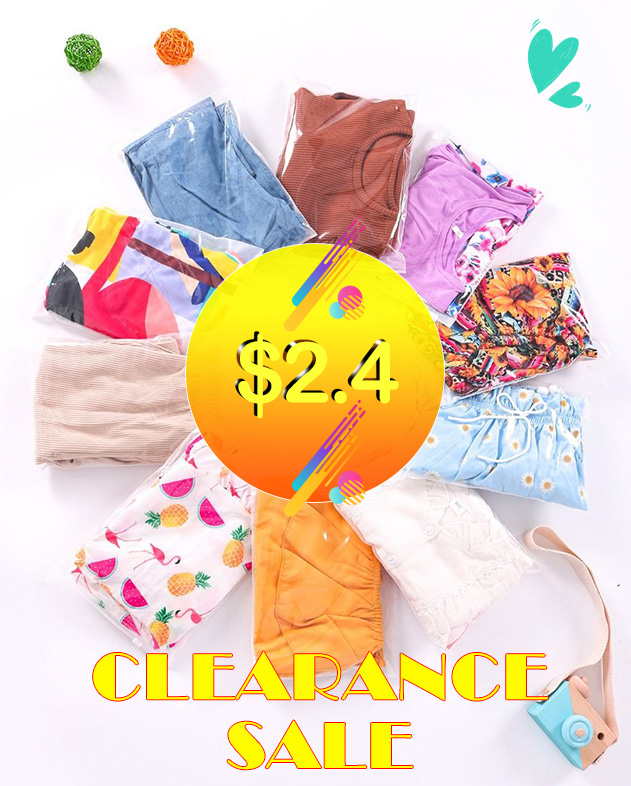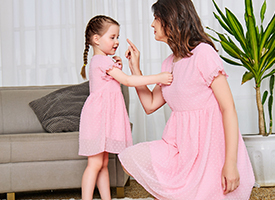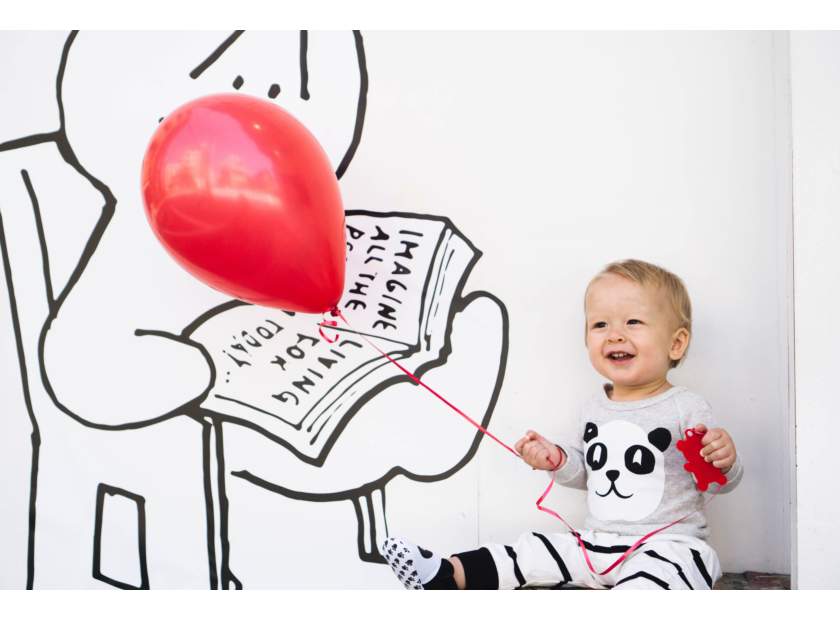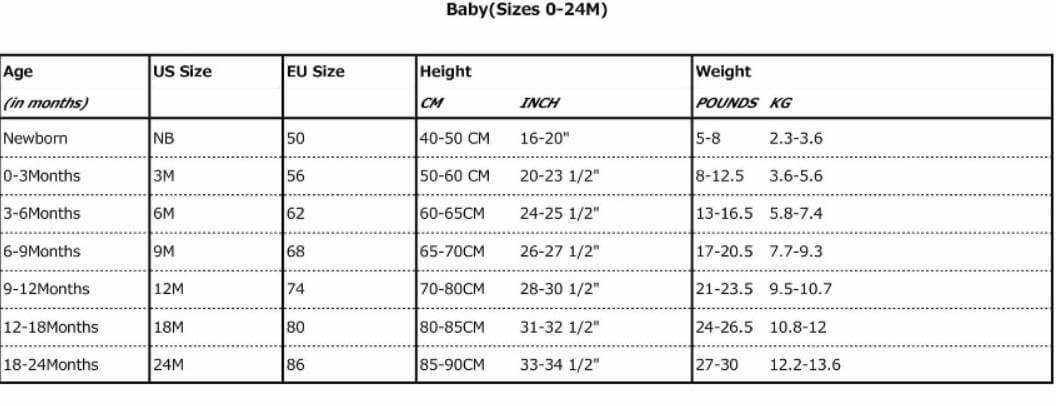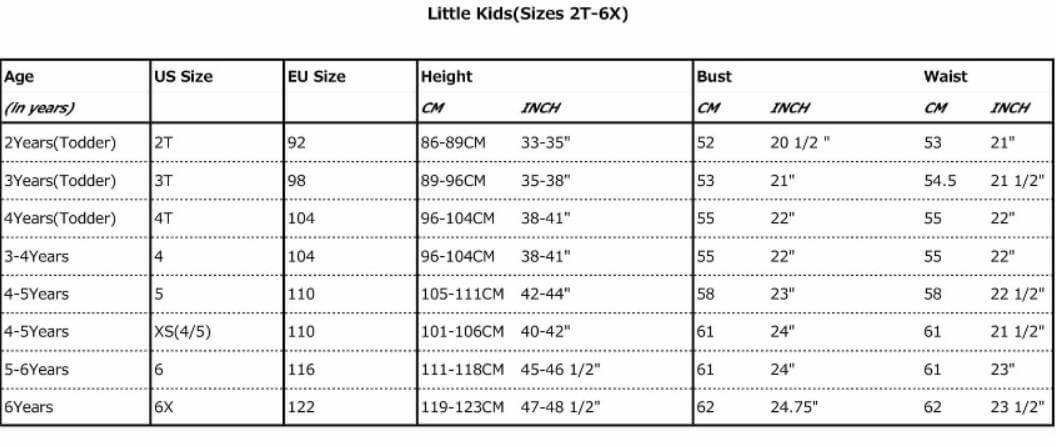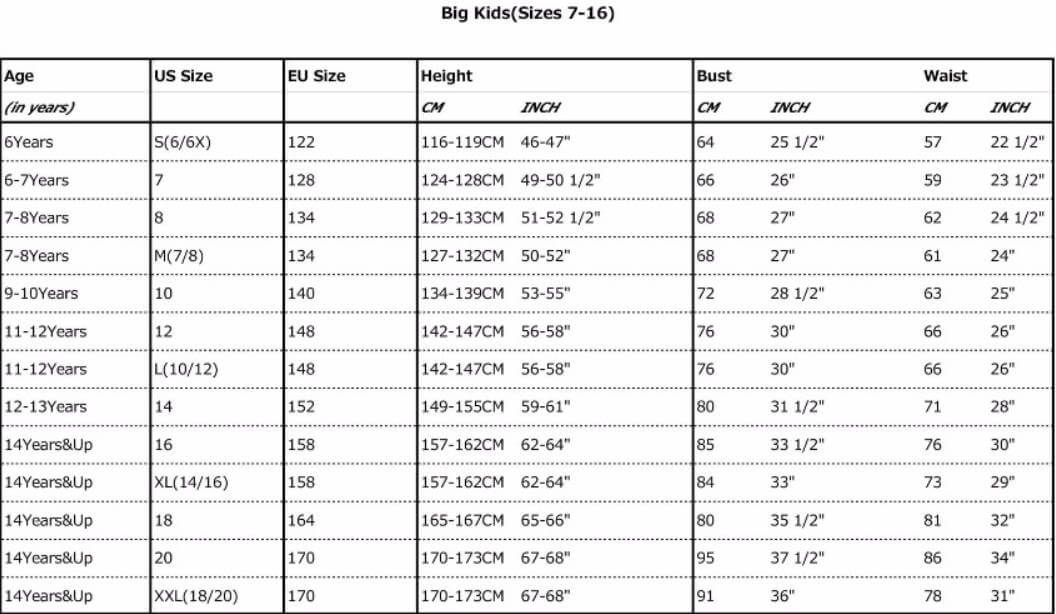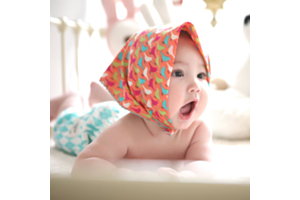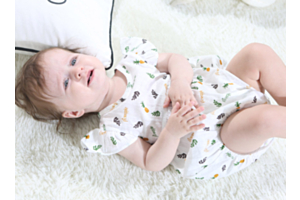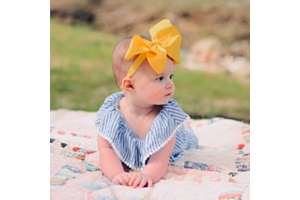Baby Clothes Sizes

Posted:
September 01, 2021
Categories:
Guide
Introduction
If you are starting to be a parent or your child has not yet been born, or you want to open a baby clothes store, to choose the right baby clothes size is a headache. It is said the first clothes a newborn baby wears in this world is the baby's second skin. Whether it is a newborn or a few months old baby, their skin is very delicate. Therefore, baby wear clothes should be safe and qualified, comfortable, and conform to baby clothes sizes.
The growth of a baby is a natural law
The growth of babies follows certain rules, but each baby has a different rhythm. Some babies grow fast, others grow slowly. Generally speaking, baby clothes sizes are divided by age. Newborn clothes size is marked with NB; bigger baby clothes are marked with months, such as 0-3M; infant clothes are marked with age, such as 2T or 2year means two years old.
However, due to the different growth rhythms of each baby, the clothes you bought may not be suitable. Ask any experienced parents, it is possible their baby wear clothes that do not 100% match the age. Maybe they are still wearing a 1-month baby dress at 2 months, or they have been wearing 6 months baby dress at 4 months old.
Therefore, when we buy clothes, we should pay as much attention to the baby's height and weight as possible. When buying clothes for newborns, please refer to the size chart. You should buy a size that corresponds to the baby's height and weight, not only age.
Things you need to know about baby sizes
Buying clothes for your baby is a happy thing for parents. But the reality is that many retailers do not provide baby clothes size charts, so even if parents are faced with many beautiful baby clothes, they cannot decide to buy them immediately. The following is the Kiskissing size chart of the baby of different ages. No matter how old your baby is, you can find the sizes-age-weight-height info here.
Basic children's clothing size
These are the basic types of baby clothes sizes:
- Baby (0-24 months)
- Toddler (2years-6years)
- Child (4-6years)
- Older child or youth (7-16years)
- Extended size (18-20years)
Baby clothes sizes(0-2years)
Little kids' clothing sizes(2-6years)
Big kids' clothing sizes(7-16years)
Girls' clothing sizes
When it comes to the size of girls' clothes, we also suggest you use clothes measurements to determine which size you are after.
- 10 Slim – 24-inch waist
- 10 Regular – 26-inch waist
- 10 Plus (10 ½) – 29-inch waist
Boy's clothing sizes
Boys grow up faster than girls. Speaking of boys' pants sizes, Slim and Husky sizes are common. Slim provides a smaller waist circumference, while Husky is similar to Plus Size. When buying pants or shorts for boys, be sure to provide measurements.
How to know what size your baby fits
As mentioned above, age is not the only criterion for buying clothes. If you want your baby to wear suitable clothes, you have to rely on your baby's weight and height. Below is a chart about baby clothes sizes for your reference.
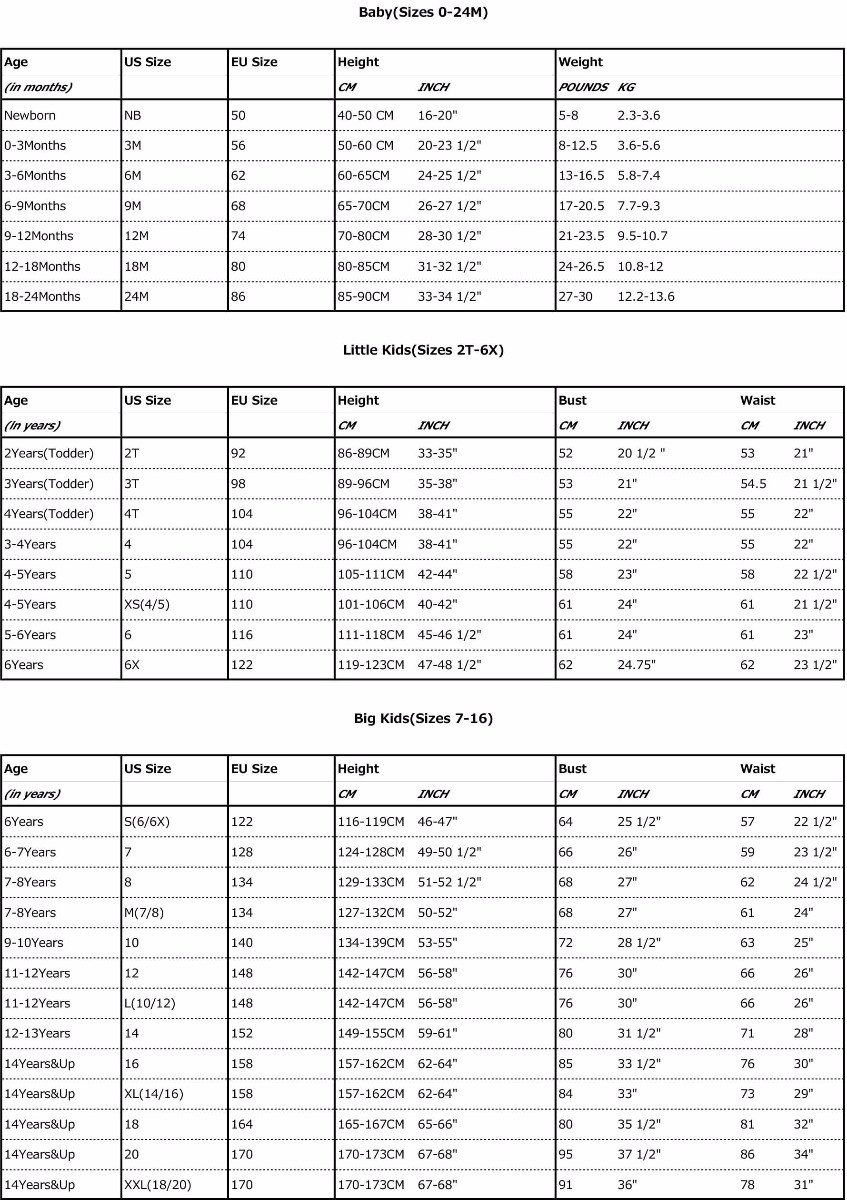
How many clothes do you need for each size?
Novice parents will be eager to prepare a lot of small baby clothes. They will also wholesale bigger baby clothes. But remember, don't prepare too many clothes for your baby. You don't know the baby clothes sizes, and the baby grows up very fast, maybe a piece of clothing can only be worn for a few weeks. You should prepare the necessary baby clothes in bulk for your baby first, including:
Summer baby
4 to 8 bodysuits
4 to 8 shirts
3 piece pajamas
3 to 6 jumpsuits
4 to 8 pairs of socks
Winter baby
1 to 2 coats
4 to 8 bodysuits
3 piece pajamas
1 hat
4 to 8 pairs of thick socks
The specific number depends on the situation. In summer, babies are prone to sweat, so they change clothes frequently; in winter, babies are afraid of cold, so they should prepare a few more cotton clothes.
Precautions when buying
The color of the clothes
For the color of baby clothes, we suggest you choose pure/solid color cotton clothes for small babies. On the one hand, it can prevent the pigment from causing allergies to the baby's skin; on the other hand, you can also directly see the stains on the clothes if the clothes are not good quality.
Avoid excessive decoration
Clothes for small babies should minimize decorations, such as buttons and zippers on baby clothes. These decorations can easily cause babies to be injured. If the thread entangles the baby's fingers or toes, it will affect the baby's blood circulation.
Choose the right fabric
The baby's skin is very delicate, and the sweat glands are particularly strong. Therefore, to reduce the friction between the skin and clothes, as well as breathability, it is best to choose pure cotton clothes when buying baby clothes.
Baby clothes sizes
The most important thing for baby clothes sizes is to make your baby wear loose and not tight. If it is too tight, it will affect the baby's blood circulation.
Clothes style
Newborns should wear front cardigans or round-necked clothes because the baby does not adapt to his face being blocked by clothes. Moreover, the front cardigan is convenient for mothers to put on and take off the baby or change the diaper in time. On the other hand, it can reduce the chance of exposed skin.
Investigate the brand
The size of different brands may be slightly different, so you should check the label carefully before buying. If you want wholesale baby clothes in bulk, you'd better buy them a few days in advance, if they are not suitable, you can return them in time.
Conclusion
If you don’t know how to choose baby clothes sizes, if you don’t know what to pay attention to when buying baby clothes, these simple guides can save you time and money. Buying clothes for your baby is a happy thing, and we hope you won’t feel it is troublesome.


